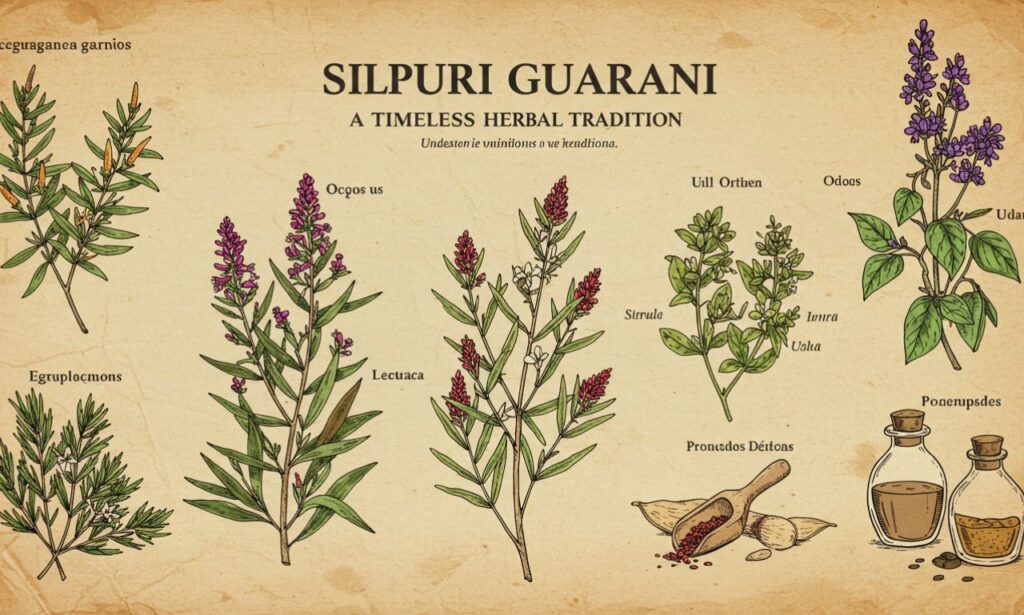Silpuri- guarani is not just a phrase—it’s a portal into the ancient wisdom of South America’s Guarani people. Rooted in centuries-old herbal knowledge, silpuri is both a spiritual and medicinal remedy, revered for its curative properties and deep cultural significance. Though largely unknown outside its native lands, silpuri- guarani is gaining attention for its natural benefits and ethnobotanical relevance.
This article delves into the essence of silpuri- guarani, tracing its origins, uses, spiritual roles, and modern-day relevance.
What is SilpuriGuarani?
The term silpuri -guarani refers to a traditional herbal mixture or plant preparation used by the Guarani people of Paraguay, Brazil, and Argentina. The Guarani are one of South America’s most spiritually rooted indigenous groups, known for their deep relationship with nature. In their language, ” denotes a kind of natural decoction, often made from wild-harvested plants believed to have both physical and metaphysical effects.
Cultural Significance of SilpuriGuarani Communities
Silpuri is far more than a herbal drink—it’s part of Guarani cosmology. It is used in:
-
Cleansing ceremonies
-
Healing rituals by shamans
-
Protection rites for children and elders
-
Traditional celebrations and seasonal transitions
Often prepared communally, silpuri -guarani connects individuals to ancestral knowledge and Mother Earth.
Spiritual Role of SilpuriGuarani in Ancestral Practices
The Guarani believe that silpuri connects them to the Ñamandú, their supreme being. It is often consumed:
-
Before rituals to purify the body and soul
-
During visions or spiritual journeys
-
As offerings to the spirits of the forest
For the Guarani, silpuri is not just medicine—it is sacred.
SilpuriGuarani and Natural Healing
Beyond its cultural uses, silpuri- guarani holds genuine health benefits. Traditional healers employ it to treat:
-
Fever and colds
-
Indigestion
-
Mild infections
-
Skin conditions
-
Anxiety and insomnia
Unlike synthetic medications, silpuri is holistic—treating the mind, body, and spirit as one.
How SilpuriGuarani is Prepared Traditionally
Silpuri preparation follows ritualistic methods:
-
Harvesting at dawn—when plants are ‘alive’ with energy
-
Blessing the herbs with prayers or chants
-
Boiling or steeping in spring water, never tap
-
Serving in communal gourds or clay vessels
Each step is done with intention and respect, reinforcing its sacred value.
Modern Recognition of SilpuriGuarani
In recent years, ethnobotanists and herbal medicine enthusiasts have taken interest in silpuri. Research now highlights:
-
Its antioxidant and anti-inflammatory effects
-
Its potential as a natural stress reliever
-
Its role in immune system modulation
Some universities in Brazil and Argentina have documented its medicinal uses in peer-reviewed journals.
Challenges in Preserving SilpuriGuarani Traditions
Despite its value, silpuri is under threat due to:
-
Deforestation
-
Loss of indigenous lands
-
Decline in traditional knowledge
-
Globalization of younger generations
Efforts are being made to preserve this practice through oral history projects and community-led initiatives.
Ethical Considerations in Using SilpuriGuarani
As outsiders gain interest in silpuri, it’s vital to:
-
Credit Guarani knowledge
-
Avoid commercial exploitation
-
Support ethical wild-harvesting
-
Advocate for indigenous land rights
Silpuri should be shared with respect and responsibility.
SilpuriGuarani in Urban Herbalism
Urban herbalists in São Paulo, Asunción, and Buenos Aires have begun to incorporate silpuri-inspired blends in:
-
Natural wellness teas
-
Botanical skincare products
-
Spiritual cleansing kits
These modern adaptations offer a bridge between traditional and contemporary healing.
Community-Led Initiatives to Protect SilpuriGuarani
Organizations like Aty Guasu and COIAB are working with Guarani communities to:
-
Document herbal traditions
-
Train youth in silpuri preparation
-
Protect native plant biodiversity
Their work ensures silpuri doesn’t fade into obscurity.
Can Non-Indigenous People Use SilpuriGuarani?
Yes, but with mindfulness and permission. Buying from community-sanctioned sources, respecting its cultural context, and not commodifying it are key.
The Role of Elders in Passing Down Silpuri Knowledge
Elders are the guardians of silpuri. They know:
-
When to harvest
-
How to blend
-
What chants to use
-
Which ailments each plant treats
Their stories and songs hold as much medicine as the herbs themselves.
SilpuriGuarani in Rituals of Birth and Death
In Guarani life, silpuri is present:
-
During childbirth, to bless the mother and baby
-
After death, to guide the spirit
-
During illness, to restore balance
It symbolizes the circle of life, from first breath to last.
Sustainable Harvesting Practices for Silpuri Ingredients
Guarani communities harvest herbs:
-
Only during specific moon phases
-
Avoiding over-collection
-
Rotating plant sources
-
Using biodegradable tools
These practices honor the Earth while maintaining long-term availability.
Silpuri Guarani: Bridging the Gap Between Past and Present
Whether sipped by a shaman in a forest or an herbalist in a café, silpuri- guarani carries an unbroken thread of healing. It reminds us that ancient knowledge is still relevant today, perhaps more than ever.
Conclusion
The silpuri- guarani tradition is a glowing example of how indigenous knowledge enriches our understanding of health, nature, and spirit. Its herbal complexity, cultural symbolism, and ritual usage make it one of the most fascinating herbal practices in South America. While modern science begins to catch up, the Guarani already knew: true healing comes from the Earth—and from honoring its spirit.







